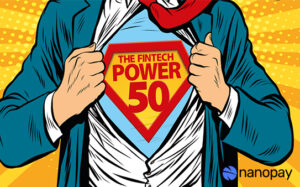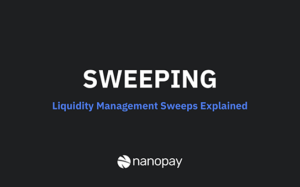The last few hundred years have undoubtedly been the Age of Cash, with paper money reigning over the world’s economy. Until recently “cash is king” could be taken quite literally. But eventually, even the greatest empires crumble. We are living in an exciting, yet chaotic, time as technological advancements finally allow for new currency options to flourish, shaking the foundations of cash, and forging a new, digital age.
We began this series by looking at the world’s two largest economies, exploring why they’ve differed so greatly in the evolution of their payment culture. In Part 2 of this series, we examined what happens to a payment culture when it is driven by a lack of options. In Part 3, we will be looking to the future and asking, “What does a payment culture look like without physical money?”
We continue to look at 4 forces that help drive a payment culture:
- Self: Individuals are influenced by the collective, but are still distinct in their preferences.
- Education: The extent to which people are educated on new types of technologies.
- Culture: The socio-economic culture of a country, or region.
- Options: A bit of the “chicken or the egg” dilemma, as the payment options (or lack thereof) can influence the culture.
It may appear as though the countries working hardest to move away from cash are the developing nations, after all, Part 1 of this series compared the United States, the world’s leader in cash, with China, the largest, and fastest growing mobile payment market in the world. Meanwhile, Part 2 of this series examined an entire region of Africa that is using ‘old school’ mobile phones to make payments and grow their economies, which have suffered from poverty and inadequate infrastructure for decades. However, the country leading the transition to a cashless society happens to be one of the most prosperous countries on Earth, Sweden.
History repeats itself?
358 years ago, Sweden became the first European country to issue an official banknote, a decision that was undoubtedly a criticized concept at the time. While this attempt to transition away from coins did not last, we know now that the Swedes were onto something great (for those interested, the invention of the banknote is credited to 7th Century China).
Sweden is currently examining new forms of money, but not because they think it would make the country more advanced, or because of the pitfalls of cash (yes, there are plenty). Sweden is looking to transition away from physical cash because the population is already making this transition naturally. According to the Riksbank, Sweden’s central bank, physical cash transactions amounted to barely 2% of the country’s total payments in 2016.
And while Sweden is the farthest along in the process, the Nordic countries as a whole (Denmark, Norway, Finland, Iceland) are all moving away from cash, each molding their own path. In fact, the Danish government has set a target goal of being 100% cashless by 2030. However, many predict that Sweden will be cashless by 2025, and not because of any government mandate, but because citizens strongly prefer digital payments.
Culture of innovation
This concept may seem hard to believe if you’re living in North America, but the Nordic countries, and Sweden in particular, have been transitioning away from cash for years, and have used some pretty incredible digital tools to do so. For example, In 2012, six large Swedish banks worked together to develop what is arguably the world’s most advanced mobile payment platform to date, Swish. The platform connects a user’s phone number to their bank account, and enables users to transfer money in real time. To ensure security, users must also download an application that issues a unique electronic identifier. The system, which can only be used by an individual or company with a Swedish bank account, has become so popular, that by 2018 Swish had nearly 7 million users, in a country of just 10 million. This system, which required a great amount of teamwork and innovation, was a first-of-its-kind, and still seems unbelievable to most countries outside of northern Europe, however, its success is unquestionable. Oh, and it’s free to use.
As the country is quite clearly on its way to a cashless society, the Riksbank has decided to deeply examine the possibility of a Central Bank Digital Currency, or CBDC. The E-krona, as Sweden calls it, would be exactly that, an electronic Swedish dollar (Krona). A digital currency can be a difficult concept for one to wrap their head around, but it is fundamentally, a digital banknote, existing solely online, rather than offline. This may seem similar to a cryptocurrency, with both concepts existing online, however, legal tender today is issued by a central bank, which is why the public puts their trust in cash. This means that like cash, a CBDC would have unique identifiers to ensure security, would be centrally owned by the central bank, and would be guaranteed by the federal government of said nation. While cryptocurrency may use similar technology and security to a CBDC, cryptocurrency is not issued by a central bank or backed by the federal government.
There are many technical and regulatory challenges surrounding a digital currency, but it is necessary for Sweden to explore this new form of digital cash, as cash is not just a tool used by the general public to exchange goods and services, but also a tool to help central banks regulate the health of a nation’s economy.
Cecilia Skingsley, one of the six deputy governor’s of the Riksbank was quoted as saying, “It has not been a conscious decision by the Riksbank, or by any other legislatures, that we are going cashless, but the combination of technological change, people behaviour changing, and legislative circumstances, is creating some rapid movements, and this is a head scratching moment for a central banker such as myself”.
Ms. Skingley illustrates that the hive mind of Sweden, with the support of new technology, new products, and new education, sees the advantages and efficiencies of digital payment options as compared to physical payment options. This once again demonstrates that culture is not typically dictated by major legislative decisions, but by the cumulation of many small preferences, based on convenience and efficiency (with a little promotion sprinkled in for good measure).
What does the future hold in store?
While the debate surrounding the future of money is in full effect, this digital evolution has been quietly building momentum for some time. The future of money was being debated by experts as early as 2002, years before Bitcoin or mobile payments were invented. The Organization for Economic Co-Operation and Development (OECD) even released a report examining how money will evolve moving forward, including technological influences.
17 years later, Sweden’s advanced payment culture has created a need for new currency options, and the central bank has recognized this need. But the Swedes are not alone in this digital movement. Sweden’s payment culture may be unlike any other, but many countries are now exploring the possibility of a CBDC. In fact, according to the Bank of International Settlements (BIS), 70% of central banks surveyed are researching the issuance of CBDC, with a few countries already committed to develop some form of CBDC.
The future of money will be cashless and payment technology companies, like nanopay, are well positioned to embrace this new digital age. Those who are not well positioned for innovation, including central banks, will look on while others develop new solutions that meet people’s needs. We hope this series has made it abundantly clear that innovation requires constant reevaluation. We should never stop observing, learning, or critically examining the world, especially the world of payments.
“Learning and innovation go hand in hand. The arrogance of success is to think that what you did yesterday will be sufficient for tomorrow.”
-William Pollard





